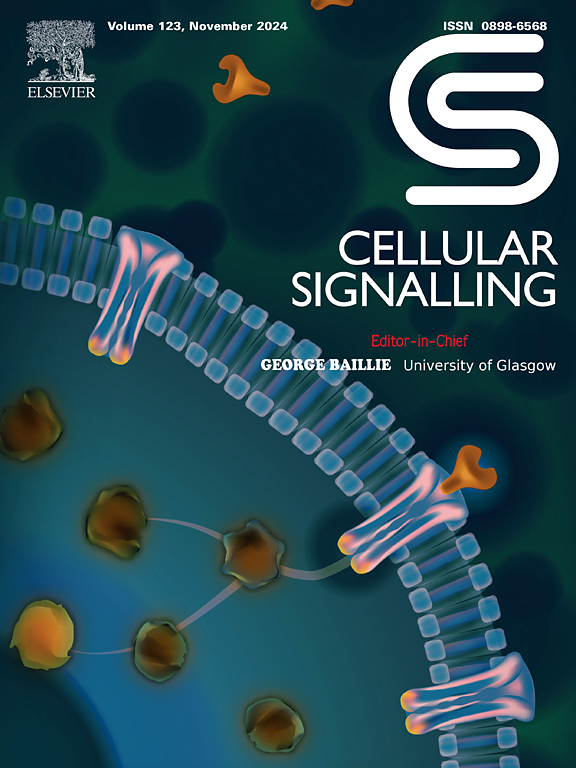Effects of higenamine on M1/M2 polarization and osteoclast differentiation in rheumatoid arthritis via the THBS-1/TGF-β signaling pathway
IF 4.4
2区 生物学
Q2 CELL BIOLOGY
引用次数: 0
Abstract
This study investigated the therapeutic efficacy of Higenamine (HG), an extract from Monkshood, in the context of rheumatoid arthritis (RA). As an autoimmune disorder, RA is characterized by significant bone destruction primarily driven by inflammatory processes. Analysis demonstrated marked infiltration of macrophages within RA immune cells. HG inhibited iNOS, TNF-α, and IL-1β expression in M1 macrophages while enhancing IL-10, Arg-1, and MCP-1 levels in M2 macrophages. Flow cytometry confirmed HG's capacity to promote the M1 to M2 macrophage transition. Transcriptomic analysis established connections between HG, RA, osteoclast differentiation, and the THBS-1/TGF-β signaling pathway, indicating its potential to mitigate bone destruction. In vitro studies showed that HG diminished osteoclast differentiation and downregulated V-ATPase, Ctsk, TRAP, THBS-1, and TGF-β expression. In vivo, HG alleviated arthritis symptoms in collagen-induced arthritis (CIA) mice, reduced M1 macrophage accumulation, modulated THBS-1/TGF-β signaling, and lessened joint damage. Micro-CT imaging and staining corroborated the reduction in osteoclast numbers and improvement in bone homeostasis. In summary, HG presents a promising therapeutic avenue for RA and associated bone destruction through modulation of the THBS-1/TGF-β signaling pathway.
高铁胺通过THBS-1/TGF-β信号通路对类风湿关节炎M1/M2极化和破骨细胞分化的影响
本研究探讨了乌头提取物海根胺(HG)对类风湿关节炎(RA)的治疗效果。作为一种自身免疫性疾病,RA的特点是主要由炎症过程驱动的显著骨破坏。分析显示,RA免疫细胞中有明显的巨噬细胞浸润。HG抑制M1巨噬细胞iNOS、TNF-α和IL-1β的表达,提高M2巨噬细胞IL-10、Arg-1和MCP-1的表达。流式细胞术证实HG促进巨噬细胞M1向M2转化的能力。转录组学分析建立了HG、RA、破骨细胞分化和THBS-1/TGF-β信号通路之间的联系,表明其具有减轻骨破坏的潜力。体外研究表明,HG抑制破骨细胞分化,下调V-ATPase、Ctsk、TRAP、THBS-1和TGF-β的表达。在体内,HG可减轻胶原诱导关节炎(CIA)小鼠的关节炎症状,减少M1巨噬细胞积聚,调节THBS-1/TGF-β信号,减轻关节损伤。显微ct成像和染色证实了破骨细胞数量的减少和骨稳态的改善。综上所述,HG通过调节THBS-1/TGF-β信号通路,为RA和相关骨破坏提供了一条有希望的治疗途径。
本文章由计算机程序翻译,如有差异,请以英文原文为准。
求助全文
约1分钟内获得全文
求助全文
来源期刊

Cellular signalling
生物-细胞生物学
CiteScore
8.40
自引率
0.00%
发文量
250
审稿时长
27 days
期刊介绍:
Cellular Signalling publishes original research describing fundamental and clinical findings on the mechanisms, actions and structural components of cellular signalling systems in vitro and in vivo.
Cellular Signalling aims at full length research papers defining signalling systems ranging from microorganisms to cells, tissues and higher organisms.
 求助内容:
求助内容: 应助结果提醒方式:
应助结果提醒方式:


